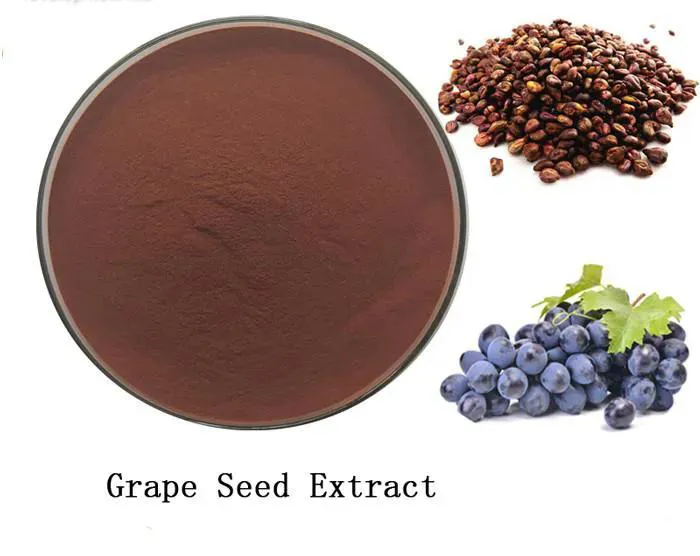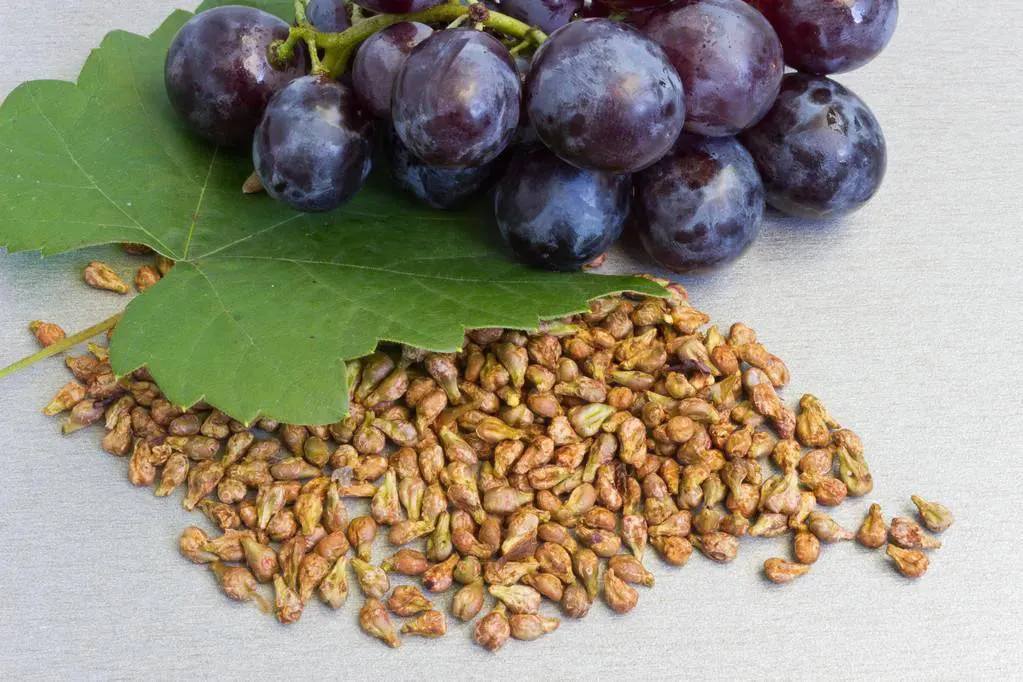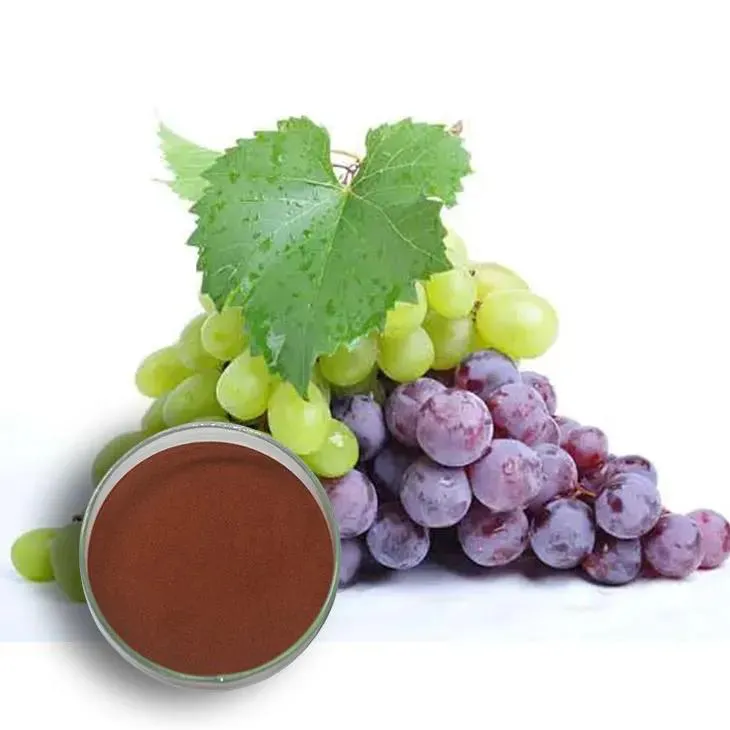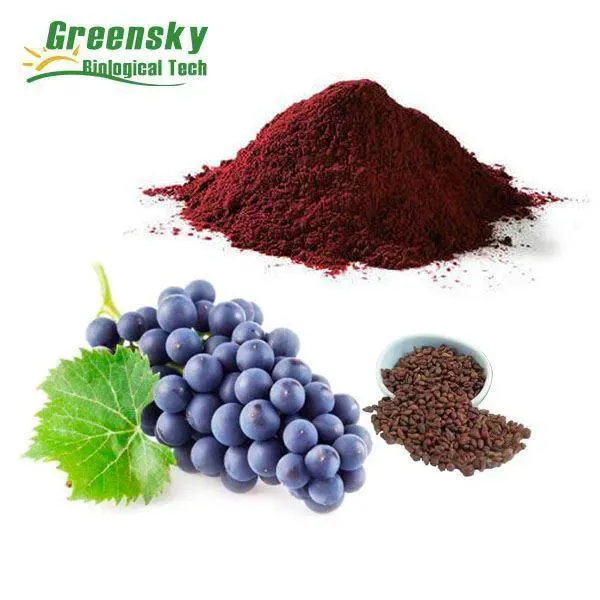- 0086-571-85302990
- sales@greenskybio.com
Navigating the Molecular Landscape of Grape Seed Extract: Insights from Research and Future Directions
2024-08-06

1. Introduction
Grape Seed Extract has been the subject of extensive research in recent years due to its potential health benefits. The molecular landscape of this extract is a complex and multi - faceted area that requires in - depth exploration. Understanding the molecular components and their interactions is crucial for unraveling the mechanisms behind its various effects. This article aims to provide a comprehensive overview of the current research on Grape Seed Extract at the molecular level, discuss its implications in different health aspects, and suggest future research directions.

2. Chemical Composition of Grape Seed Extract at the Molecular Scale
Grape seed extract is rich in a variety of bioactive compounds. Proanthocyanidins are one of the major components, which are a class of polyphenols. These proanthocyanidins are composed of multiple units of flavan - 3 - ol monomers, such as catechin and epicatechin. At the molecular level, they have a complex structure with multiple hydroxyl groups, which contribute to their antioxidant properties.
Another important group of compounds found in grape seed extract are flavonoids. Flavonoids include Quercetin, kaempferol, and myricetin derivatives. These molecules have a characteristic ring structure and are known for their ability to interact with various biological molecules. They can act as antioxidants, scavenging free radicals, and also have the potential to modulate cellular signaling pathways.
Tannins are also present in grape seed extract. Tannins are large polyphenolic molecules that can bind to proteins and other macromolecules. Their presence in the extract can influence its bioavailability and biological activity. The molecular structure of tannins allows them to form complexes with different substances, which may play a role in the overall effects of grape seed extract.

3. Contribution to Cardiovascular Health at the Molecular Level
3.1. Effects on Blood Vessels
The molecular components of grape seed extract play a significant role in maintaining cardiovascular health, especially in relation to blood vessels. Proanthocyanidins, for example, can influence the endothelial cells lining the blood vessels. At the molecular level, they can enhance the production of nitric oxide (NO). Nitric oxide is a key molecule in vasodilation, which helps to relax the blood vessels and improve blood flow. By increasing nitric oxide production, grape seed extract can lower blood pressure and reduce the risk of cardiovascular diseases.
Flavonoids in the extract also contribute to cardiovascular health. They can inhibit the oxidation of low - density lipoprotein (LDL) cholesterol. At the molecular level, flavonoids can interact with the LDL particles and prevent the formation of oxidized LDL. Oxidized LDL is a major risk factor for atherosclerosis, as it can promote the accumulation of cholesterol in the arterial walls. By preventing its formation, flavonoids in grape seed extract can help protect the blood vessels from damage.
3.2. Anti - Inflammatory Effects
At the molecular level, grape seed extract exhibits anti - inflammatory properties. The proanthocyanidins and flavonoids can modulate the activity of various inflammatory cytokines. For example, they can reduce the production of interleukin - 6 (IL - 6) and tumor necrosis factor - alpha (TNF - α). These cytokines are involved in the inflammatory response in the body. By suppressing their production, grape seed extract can help reduce chronic inflammation in the cardiovascular system, which is often associated with the development of heart diseases.

4. Role in Skin Health at the Molecular Level
4.1. Anti - Aging Effects
Grape seed extract has shown great potential in skin health, particularly in relation to anti - aging. At the molecular level, its antioxidant components, such as proanthocyanidins and flavonoids, can scavenge free radicals in the skin. Free radicals are highly reactive molecules that can damage skin cells, including collagen and elastin - producing cells. By neutralizing these free radicals, grape seed extract can help prevent premature aging of the skin.
Moreover, grape seed extract can stimulate the production of collagen at the molecular level. Collagen is a crucial protein for maintaining skin elasticity and firmness. The bioactive compounds in the extract can activate certain signaling pathways in fibroblasts, the cells responsible for collagen production. This leads to an increase in collagen synthesis, which can reduce the appearance of wrinkles and improve skin texture.
4.2. Protection against UV - Induced Damage
The molecular components of grape seed extract also offer protection against UV - induced damage in the skin. UV radiation from the sun can cause oxidative stress in the skin cells, leading to DNA damage and other harmful effects. Grape seed extract can upregulate the expression of antioxidant enzymes at the molecular level. These antioxidant enzymes, such as superoxide dismutase (SOD) and catalase, can neutralize the reactive oxygen species generated by UV radiation. This helps to protect the skin from UV - induced damage and reduce the risk of skin cancer.

5. Implications for the Nutraceutical and Cosmeceutical Industries
The understanding of the molecular mechanisms of grape seed extract has significant implications for the nutraceutical and cosmeceutical industries.
- Nutraceutical Industry: In the nutraceutical industry, the knowledge of the molecular health - promoting effects of grape seed extract can be used to develop dietary supplements. These supplements can be targeted towards individuals at risk of cardiovascular diseases or those interested in maintaining skin health. For example, supplements containing a specific concentration of proanthocyanidins can be formulated based on the research findings on their cardiovascular benefits.
- Cosmeceutical Industry: For the cosmeceutical industry, grape seed extract offers a natural and effective ingredient for skin care products. The anti - aging and UV - protecting properties at the molecular level make it an attractive option for creams, lotions, and serums. Cosmetic companies can use the research on grape seed extract to develop products that are not only effective but also backed by scientific evidence.
6. Gaps in Current Knowledge and Future Research Directions
Despite the extensive research on grape seed extract, there are still several gaps in our current knowledge.
- Bioavailability and Metabolism: The bioavailability of the different molecular components of grape seed extract in the human body is not fully understood. Future research should focus on how these compounds are absorbed, distributed, metabolized, and excreted. This will help in determining the optimal dosage and formulation for maximum effectiveness.
- Molecular Targets and Signaling Pathways: While some of the molecular targets and signaling pathways affected by grape seed extract have been identified, there are likely many more that remain unknown. Further studies are needed to fully elucidate the complex network of interactions at the molecular level. This will provide a more comprehensive understanding of its mechanisms of action.
- Long - Term Effects: Most of the current research on grape seed extract has focused on short - term effects. There is a lack of long - term studies to determine its safety and efficacy over extended periods. Long - term studies are crucial for assessing its potential as a preventive or therapeutic agent in various health conditions.
In conclusion, the molecular landscape of grape seed extract is a rich and complex area of study. The current research has provided valuable insights into its chemical composition and its role in cardiovascular and skin health. However, further research is needed to fill the gaps in our knowledge and fully realize the potential of grape seed extract in the nutraceutical and cosmeceutical industries. By continuing to explore the molecular mechanisms of this extract, we can look forward to more effective and targeted applications in the future.
FAQ:
What are the main molecular components of grape seed extract?
Grape seed extract contains various molecular components. Prominent among them are polyphenols, such as proanthocyanidins. These are large molecules made up of flavan - 3 - ol units. Other components may include phenolic acids and flavonoids. Proanthocyanidins are of particular interest due to their antioxidant properties and potential role in various health - promoting effects.
How does grape seed extract contribute to cardiovascular health at the molecular level?
At the molecular level, grape seed extract affects several processes in blood vessels. Its components, like proanthocyanidins, can interact with endothelial cells lining the blood vessels. They may enhance the production of nitric oxide, which helps in vasodilation. This in turn can reduce blood pressure. Additionally, it may have antioxidant effects that protect the vascular cells from oxidative stress, which is implicated in the development of cardiovascular diseases.
What molecular interactions are involved in the anti - aging effects of grape seed extract on skin?
For skin health, grape seed extract's anti - aging effects are related to molecular interactions. The polyphenols in it can scavenge free radicals that are generated in the skin due to environmental factors like UV radiation. They can also interact with collagen and elastin molecules. By protecting these proteins from degradation, they help maintain the skin's elasticity and firmness, reducing the appearance of wrinkles and signs of aging.
What are the implications of grape seed extract for the nutraceutical industry?
The nutraceutical industry can benefit from grape seed extract in multiple ways. Due to its health - promoting properties, it can be used in dietary supplements. Its molecular components offer potential in areas such as antioxidant support and cardiovascular health promotion. Manufacturers can develop products targeted at consumers interested in natural health remedies. The extract can be formulated into various forms like capsules or tablets for easy consumption.
What are the current gaps in the knowledge of grape seed extract?
One of the current gaps is a more detailed understanding of the long - term effects of grape seed extract at the molecular level. While short - term studies have shown its benefits, the long - term impact on various biological systems needs further exploration. Another gap is in understanding the full spectrum of molecular interactions, especially in complex biological environments. Also, the optimal dosage for different health conditions is not yet fully determined.
Related literature
- The Molecular Composition and Bioactivity of Grape Seed Extract"
- "Grape Seed Extract: Molecular Mechanisms in Cardiovascular Protection"
- "Molecular Insights into the Anti - aging Effects of Grape Seed Extract on Skin"
- "Grape Seed Extract in the Nutraceutical Industry: Current Understanding and Future Prospects"
- ▶ Hesperidin
- ▶ citrus bioflavonoids
- ▶ plant extract
- ▶ lycopene
- ▶ Diosmin
- ▶ Grape seed extract
- ▶ Sea buckthorn Juice Powder
- ▶ Beetroot powder
- ▶ Hops Extract
- ▶ Artichoke Extract
- ▶ Reishi mushroom extract
- ▶ Astaxanthin
- ▶ Green Tea Extract
- ▶ Curcumin Extract
- ▶ Horse Chestnut Extract
- ▶ Other Problems
- ▶ Boswellia Serrata Extract
- ▶ Resveratrol Extract
- ▶ Marigold Extract
- ▶ Grape Leaf Extract
- ▶ blog3
-
Polygonum Cuspidatum Extract
2024-08-06
-
Peppermint Extract Powder
2024-08-06
-
melatonin extract
2024-08-06
-
Passionflower Extract
2024-08-06
-
Lemon Balm Extract
2024-08-06
-
Licorice Root Extract Powder
2024-08-06
-
Tongkat Ali Extract
2024-08-06
-
Sophora Flavescens Root Extract
2024-08-06
-
Astaxanthin
2024-08-06
-
Baicalin
2024-08-06





















